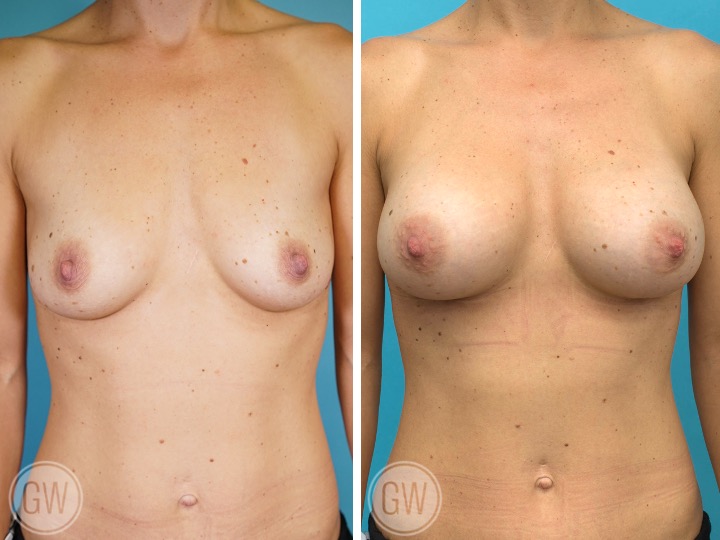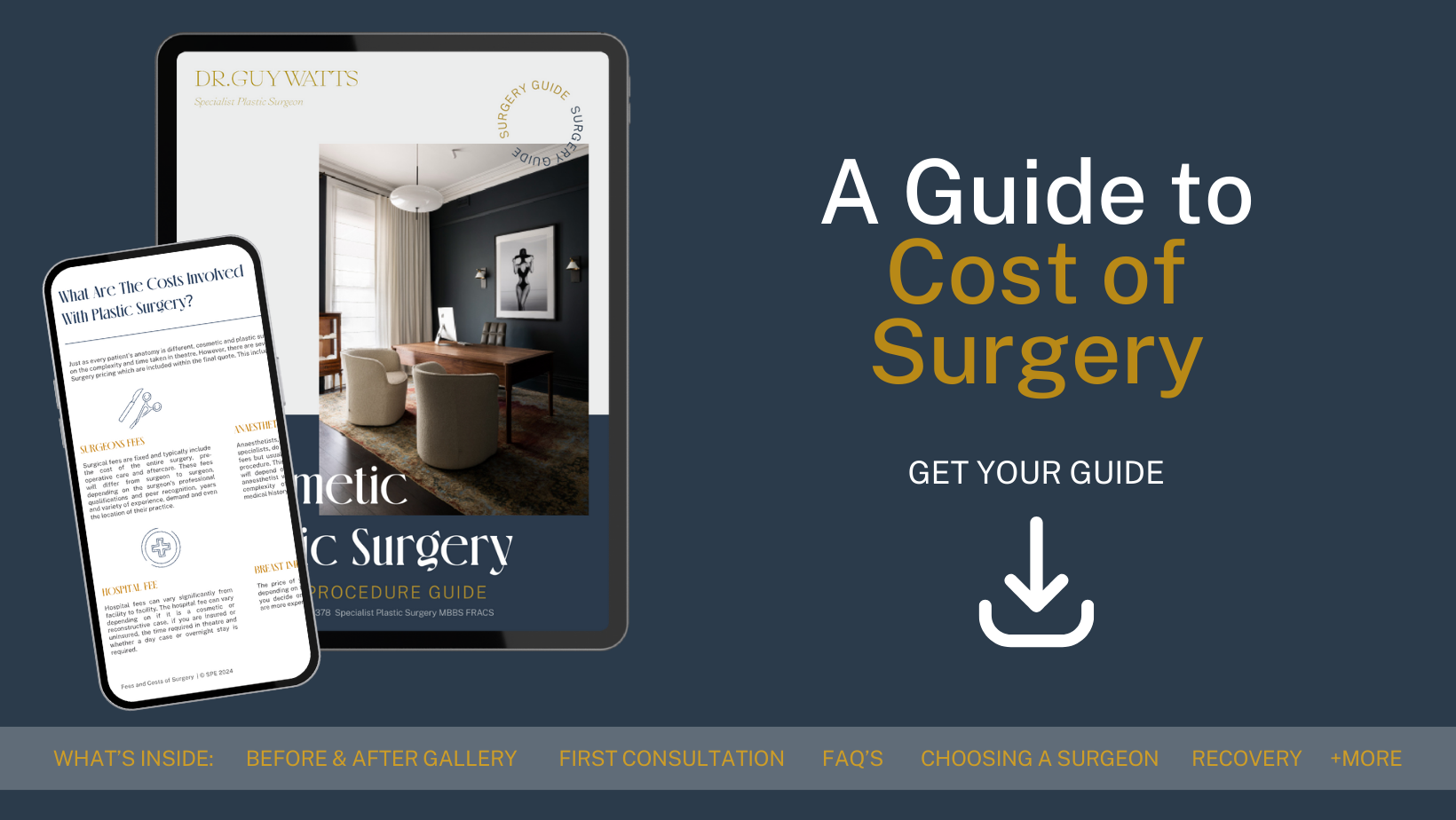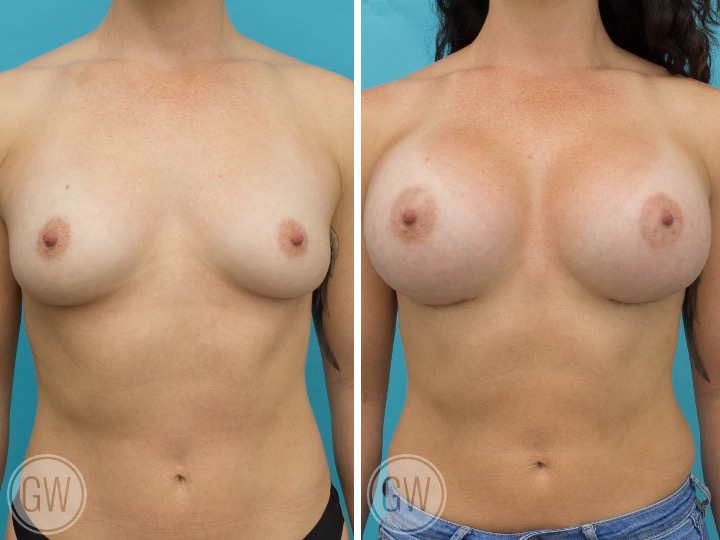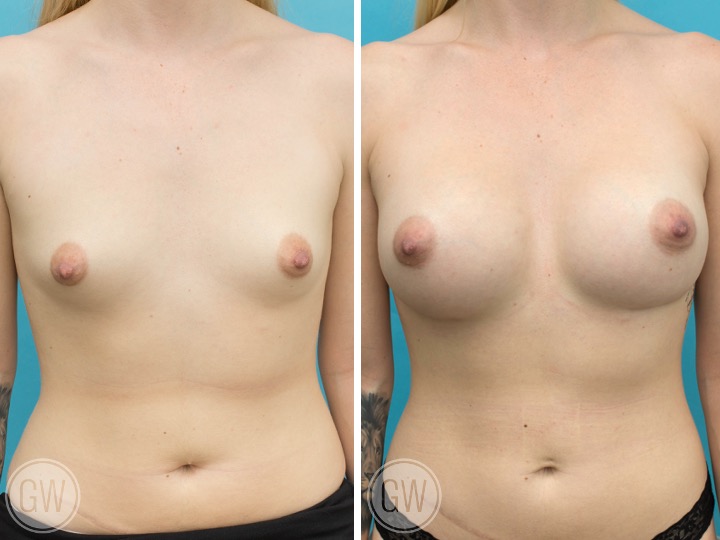
18 Aug Breast Implant Profile and Projection
When considering breast implants, many patients focus on volume or cup size. However, another critical element – often overlooked during initial research – is the implant profile. Implant profile refers to how far the implant projects from the chest wall, directly influencing the breast’s shape, upper fullness, and overall contour.
For individuals exploring breast augmentation in Perth and surrounding areas, understanding the difference between size and profile is key to making informed decisions. In this article, Dr. Guy Watts, a Specialist Plastic & Reconstructive Surgeon based in Perth, Western Australia, offers an in-depth guide to breast implant profile and projection, drawing from extensive surgical experience and evidence-based techniques.
Take our quiz, and find out if you are ready for surgery
What Is a Breast Implant Profile?
The profile of a breast implant defines how far the implant will project from the chest when viewed from the side. This is not the same as the implant’s volume, which is measured in cubic centimetres (cc). Profile is determined by the ratio between the base width (how wide the implant is across the chest wall) and the height or projection (how far it extends outward).
For example:
- Two implants may both hold 300 cc of silicone gel, yet one may project 3 cm while the other extends 5 cm, depending on their profile.
- A wider base with low projection creates a flatter, more subtle appearance.
- A narrower base with greater projection produces a more prominent, outward result.
Understanding this relationship helps patients manage their expectations and contributes to better alignment between the surgical outcome and aesthetic goals. During consultations at Dr. Watts’ Perth practice, profile is discussed alongside size and placement to determine the most suitable combination for the individual.
Types of Breast Implant Profiles Explained
Breast implants are categorised into several profiles. These profiles aren’t superior or inferior – they simply offer different dimensions suited to various body types and aesthetic preferences. Dr. Guy Watts presents the following types to patients during consultations in Perth:
Low Profile
- Characteristics: Broad base, minimal forward projection.
- Best suited for: Individuals with wider chest walls or those seeking very subtle augmentation.
- Effect: Produces a flatter contour with less upper pole fullness.
- Common considerations: May not be ideal for individuals looking to enhance cleavage or fullness. However, it can be suitable for those who prefer discreet results or are correcting minor asymmetry without significant projection.
Moderate Profile
- Characteristics: Balanced width and projection, offering a middle-ground option.
- Best suited for: Average chest widths; patients desiring a natural appearance that’s neither overly dramatic nor too flat.
- Effect: Moderate fullness with smooth contours and gentle transitions.
- Common considerations: Often considered the most versatile option. It’s frequently selected by individuals seeking harmony between implant and body proportions without excess volume in the upper breast.
High Profile
- Characteristics: Narrower base with greater forward projection.
- Best suited for: Narrower chest walls or patients who desire more pronounced enhancement.
- Effect: More visible cleavage, greater upper pole prominence, and rounder shape.
- Common considerations: Can be helpful for patients with limited existing breast tissue. Offers a more “augmented” appearance but must be balanced against chest width to avoid an overly narrow look.
Ultra-High Profile
- Characteristics: The most projection with the narrowest base.
- Best suited for: Select anatomical needs such as narrow chests with minimal soft tissue, or revision cases requiring enhanced projection.
- Effect: Very pronounced forward projection; can lift the breast mound in cases with lower tissue elasticity.
- Common considerations: Best used in highly individualised situations. Not ideal for all body types, but can be useful where higher projection is medically or aesthetically justified.
Dr. Watts will explain each profile option using educational visuals or sizing tools, ensuring patients in Perth understand how each implant might look and feel in the context of their body frame.
DOWNLOAD DR WATTS’ GUIDE TO COST OF SURGERY

How Profile Influences Your Breast Implant Results
Selecting the right implant profile has a direct impact on the surgical outcome and appearance. Here’s how profile affects different aspects of breast augmentation:
- Cleavage
- Influence: Implant profile affects the medial fullness, or how close the breasts sit together. Higher profile implants often allow for increased cleavage in patients with narrow chests.
- Clinical note: Cleavage depends not just on implant profile, but also on chest anatomy and soft tissue characteristics. Patients with a wider sternum may need broader-based implants to achieve central fullness without creating excess spacing.
- Upper Pole Fullness
- Influence: High and ultra-high profile implants create more upper pole volume, resulting in a rounder and more lifted appearance above the nipple line.
- Clinical note: This can be desirable in patients with ptosis (drooping) or minimal upper breast volume, but may appear exaggerated in others. A tailored approach ensures upper pole volume is proportionate and anatomically harmonious.
- Breast Contour and Projection
- Influence: Profile alters the overall silhouette of the breast from both a frontal and lateral view. A higher profile creates a more prominent forward shape, while a lower profile provides a flatter contour.
- Clinical note: Projection needs to be matched with chest wall slope and tissue stretch capacity to avoid tension-related complications or unnatural transitions.
- Chest Wall Compatibility
- Influence: Implants must match the width of the chest wall to prevent lateral displacement or gapping.
- Clinical note: Choosing the correct base width ensures implants sit naturally, support optimal bra fit, and avoid the “bolted on” look sometimes associated with improper implant selection.
Dr. Watts uses these considerations when designing a breast augmentation plan tailored to each patient’s anatomy and desired aesthetic – particularly for those in Perth and regional WA, where body types may vary significantly.
Choosing the Right Implant Profile: A Personalised Approach
There is no one-size-fits-all approach to breast augmentation. Profile selection must take into account:
- Chest width: A wide chest requires an implant with a broader base to fill the space naturally.
- Breast base diameter: Matching implant width with breast base prevents visible implant edges or spacing issues.
- Skin elasticity: Tighter skin limits how much projection can be safely achieved without strain.
- Natural breast tissue: More natural tissue offers coverage and may permit a broader range of profile choices.
- Lifestyle and goals: Patients with active lifestyles may prefer lower profiles for reduced weight and movement.
Dr. Watts performs thorough anatomical measurements and uses visual tools to guide patients through this decision at his Perth clinic, encouraging a collaborative and transparent consultation.
Why Surgical Experience Matters
Surgical judgment plays a crucial role in achieving consistent and proportionate results. Profile selection involves more than cosmetic preference – it involves:
- Predicting how the implant will sit long term
- Anticipating tissue response over time
- Managing volume distribution for symmetry and stability
Dr. Guy Watts, Specialist Plastic & Reconstructive Surgeon in Perth, has extensive training in breast surgery techniques and a strong understanding of thoracic anatomy. His experience includes treating diverse body types, conducting complex revision surgeries, and managing challenging presentations such as tuberous breasts or congenital asymmetry.
Patients benefit from Dr. Watts’ evidence-based, anatomy-led approach that prioritises long-term comfort, symmetry, and proportion – not temporary trends or exaggerated enhancement.
What to Expect During a Consultation in Perth
A breast implant consultation with Dr. Guy Watts is designed to be respectful, informative, and supportive. The process includes:
- Medical history review: Evaluating past surgeries, medications, hormonal influences, and general health to identify potential risks.
- Anatomical examination: Measuring the width of the chest, the position of the nipples, and the distance between the nipple and fold to create a tailored surgical plan.
- Discussion of goals: Patients are encouraged to describe their preferred outcome in terms of volume, shape, projection, and overall fit.
- Implant education: Dr. Watts explains the characteristics of each implant type, profile, and placement option without bias or sales tactics.
- Open Q&A: Patients are invited to ask questions and raise concerns. Emphasis is placed on realistic expectations and informed consent.
By providing honest, evidence-based guidance in line with AHPRA regulations, Dr. Watts ensures patients in Perth can make empowered decisions about their care.
FAQs about Breast Implant Profile and Projection
In Summary: An Individualised Decision with Professional Support
Understanding the role of implant profile in breast augmentation is fundamental to achieving a balanced and personalised outcome. Whether seeking subtle enhancement or more noticeable projection, patients benefit from a medically sound, anatomy-informed approach.
Dr. Guy Watts, Specialist Plastic & Reconstructive Surgeon based in Perth, provides evidence-based care that supports informed decision-making. By focusing on precise measurements, clear education, and long-term considerations, Dr. Watts ensures that breast implant profile selection is handled with care and clinical integrity.
If you’re considering breast implants in Perth or regional Western Australia, we encourage you to schedule a consultation to explore your options in a respectful, professional environment focused on individual care – not comparison or commercial claims.
Further Reading
-
- Read more about Dr. Watts’ blog on Choosing the Right Breast Implant Shape For You – Round Vs Teardrop
About Dr. Guy Watts – MED0001539378
FRACS (Plas) – Specialist Plastic Surgeon In Perth WA
Dr. Guy Watts is a Specialist Plastic Surgeon (AHPRA MED0001539378) with an extensive career that spans across renowned plastic surgery clinics worldwide. His experience has been honed through invaluable experiences at esteemed establishments such as the New York Eye and Ear Infirmary and the renowned Pitanguy Clinic in Brazil.
Having collaborated with the foremost cosmetic plastic surgeons on a global scale, Dr. Watts has chosen to return to Perth after a 17-year journey of intensive training and invaluable professional experience to bring the latest practices and technology in cosmetic plastic surgery to his patients.
Dr. Watts is a Fellow of the Royal Australasian College of Surgeons (FRACS) and a Member of the Australian Society of Plastic Surgeons (ASPS), Australasian Society of Aesthetic Plastic Surgeons (ASAPS) and the International Society of Aesthetic Plastic Surgeons (ISAPS).
Read about the potential Risks and Complications of Surgery
Read the Patient Information and Resources
About CLINISPA
Clinispa is Dr Watts’ bespoke medical clinic performing Cosmetic Aesthetic treatments. At Clinispa, we offer advanced clinical treatments in a luxurious and calming environment, tailored to support your skin’s health and appearance.
Clinispa aesthetic services are performed by Dr Guy Watts’ nursing professionals, who have a passion for and solid understanding of facial aesthetics.
All Clinispa clients are considered individually, with a personalised treatment plan consisting of advanced scientific approaches to cosmetic aesthetics. We incorporate innovative technologies in conjunction with superiorly formulated skin care.
For more information about the full range of Clinispa Aesthetic of Cosmetic Treatments visit the Clinispa website










Sorry, the comment form is closed at this time.